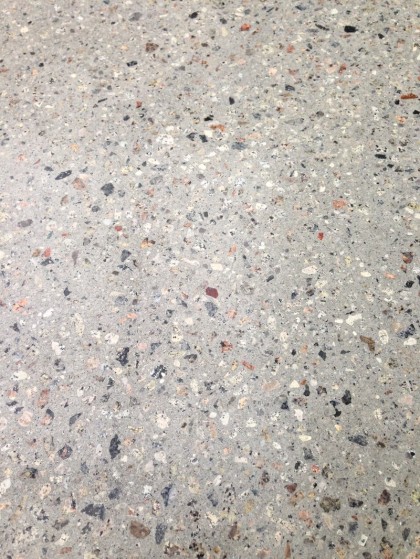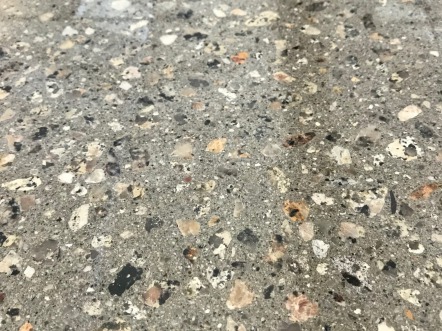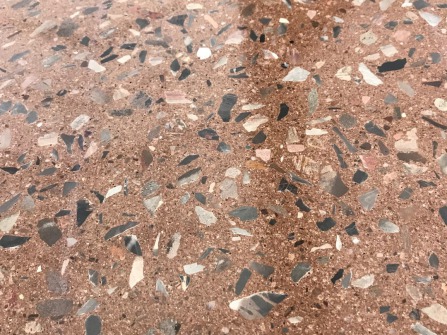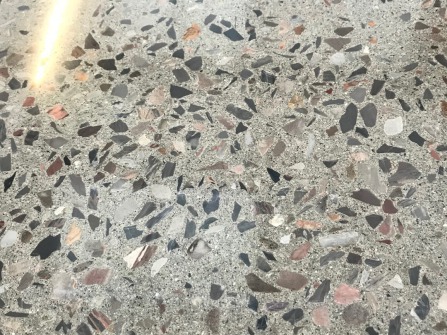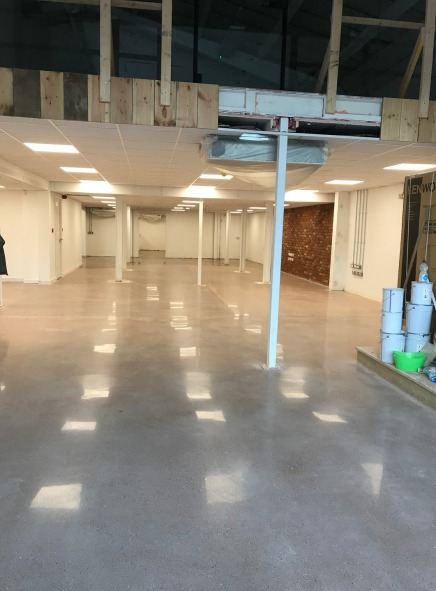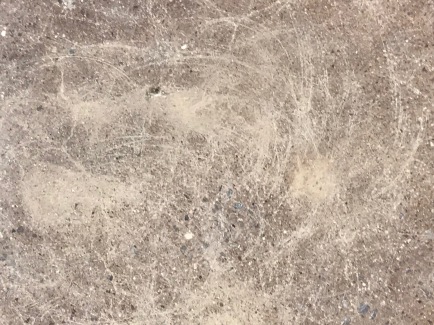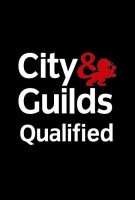Polished concrete, a few points.
There are a few points to look at before you consider polished concrete. Firstly the mix of the concrete is all important, critical in fact. Floors that have been mixed by hand are very inconsistent with very patchy areas of aggregate and often soft and hard areas where the concrete hasn't mixed properly or for long enough.The concrete should be mixed by a contractor as a single batch this will give the concrete a uniform finish when ground and polished. We have experienced all sorts of issues in the past especially with builders who mix concrete by hand. The problem is with what ends up in the mix, everything from site insulation, tree bark, mud, large lumps of aggregate you name it. This becomes a problem because once you start grinding down to expose the aggregate you end up making repairs straight away and matching the concrete can often be very difficult.
Another problem that arises is with the laying of the concrete. You need to ensure that the contractor doesn't keep walking through the concrete, they must keep it to a minimum. Again this has an effect on the finish, the aggregate gets pushed down when people walk through it and you can grind and polish a floor and see foot prints left in it.
Surface finish is also important when laying concrete that is going to be polished. The surface should be power floated or at least a trowel finish, tamped really isnt good enough. The floor needs to be as flat as possible because a flat floor reflects light better than an uneven floor so whilst a floor can be ground flat it is far better to start off with a flat floor to begin with.
Another top priority are the edges of a room. Often these areas are left low, rough and often holey. The edges ( especialy in a domestic environment ) are the most important area. The edges are normally worked by hand because planetary grinders cannot normally get within 25mm or so of the edge and probably 100-125mm from the corner of a room. This isn't however such a problem with a Werkmaster machine where you can get within 3mm of the edge, Werkmaster machines however are not as common. If the edges are left with excess aggregate sticking up or the edges are low it really becomes a problem so the contractor needs to be informed that these areas must not be over looked.
Soft concrete causes another issue in that it doesn't reflect light as well as hard concrete. The mix should be at least 35 newtons to get a decent shine. Once ground and polished a hard floor will have a better finish even if both floors have been cured properly.
Soft and hard floors are also very different to grind. Soft concrete is very abrasive so hard metal bonded diamonds are used on the first stages of grinding before grouting and curing. Hard floors on the other hand use soft metal bonded diamonds, they are required because the compounds needs to wear away to stop the diamonds glazing over and to keep a good cutting edge under the machine. The same resin bonded diamonds are used on last stages of grinding and polishing on soft and hard floors the only difference is the speeds used.
Floors can normally be ground after 7 to 10 days, this is a good time to grind the floor because over time the floor will become harder. This is also why concrete polishing is ideal for contractors and developers who have short lead times and who want a durable floor with a combination of different fnishes.
Another consideration is access to your property. To cut concrete well you need a grinder with power and weight. Many of the bigger grinders are 415v 3 phase and weigh upwards of 150kgs+ average weight being around 300-400kgs. Even though many grinders will fit through a door way many of them are to heavy to get upstairs or even to lift up the front steps of a house, consideration needs to be taken when having a floor ground, ramps maybe required. There are smaller grinders on the market but the results are not as good. Its much harder to do the first couple of cuts with a 110v machine and you do not have the weight to cut hard concrete satisfactory.
Access for generators also needs to be considered. Unless you have a 415v supply a generator will have to be brought to the site or property. Our HTC floor grinders work a maximum of 50 mtrs away from the generator so you need to look at getting the power supply close enough so you can cut the whole floor. At 1800kgs for a 60kva generator you have to ensure as well that there is enough access and the generator can be moved and run on site safely.

